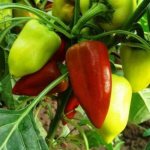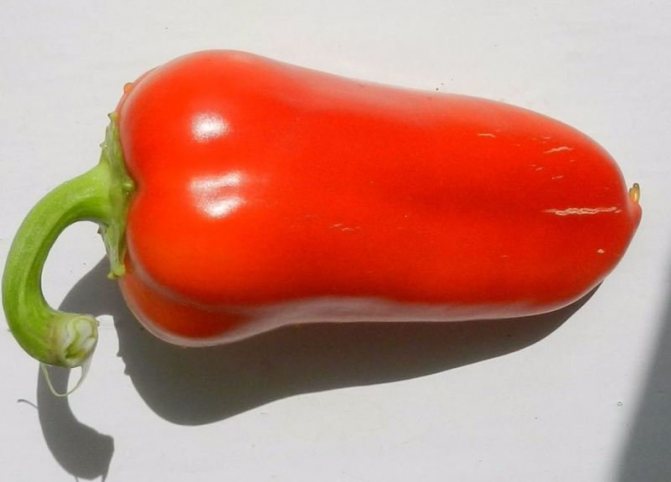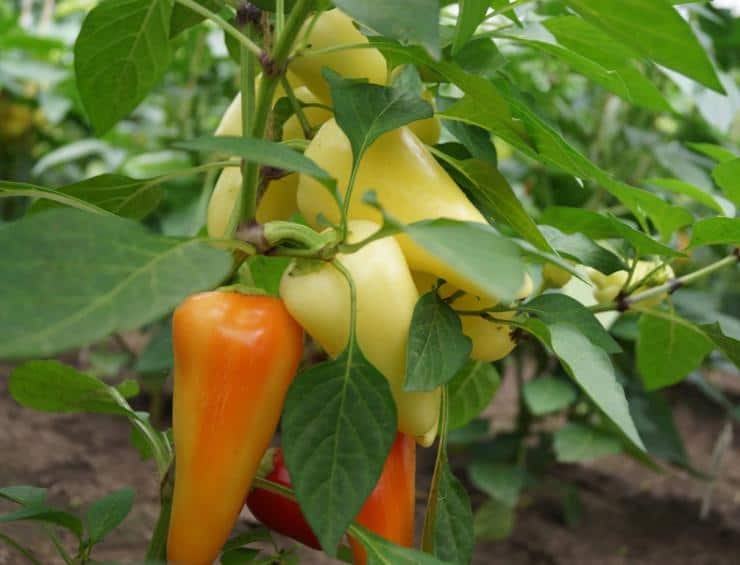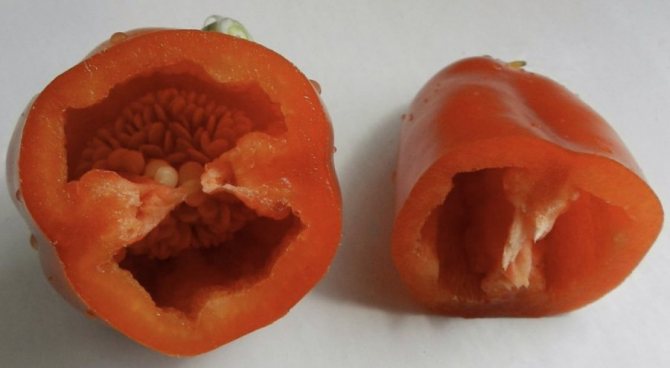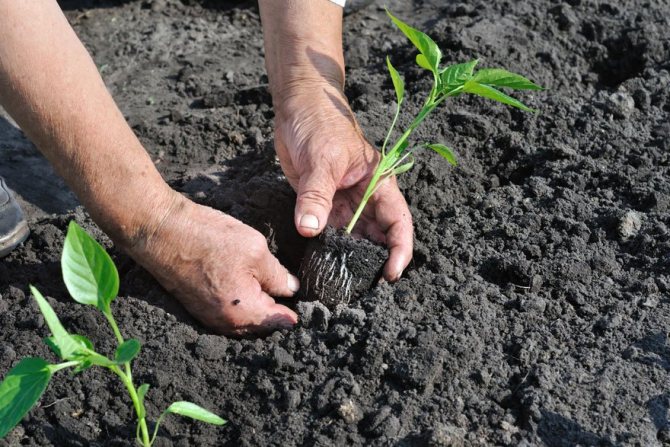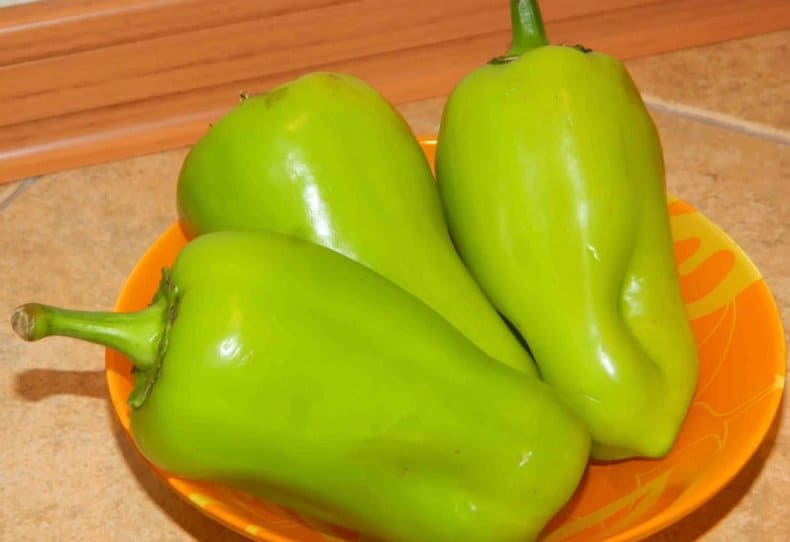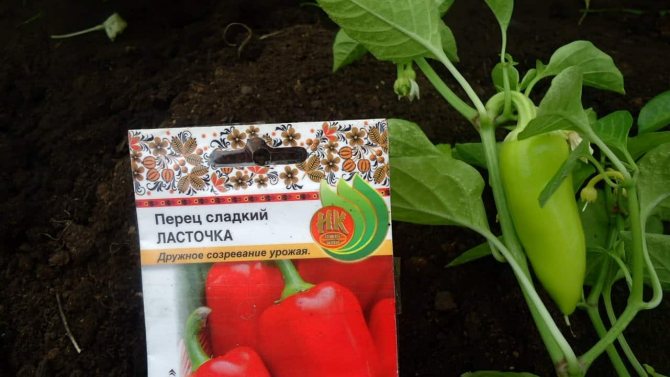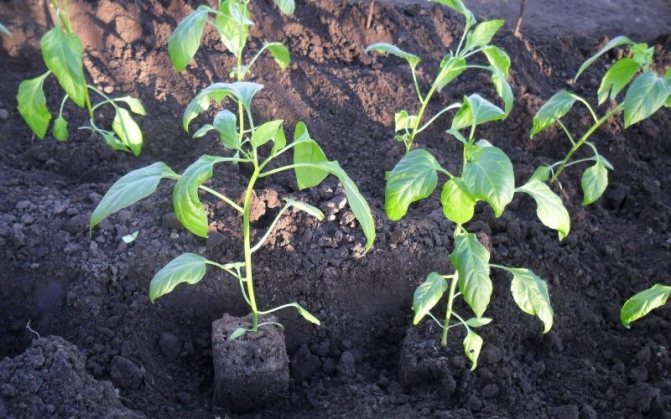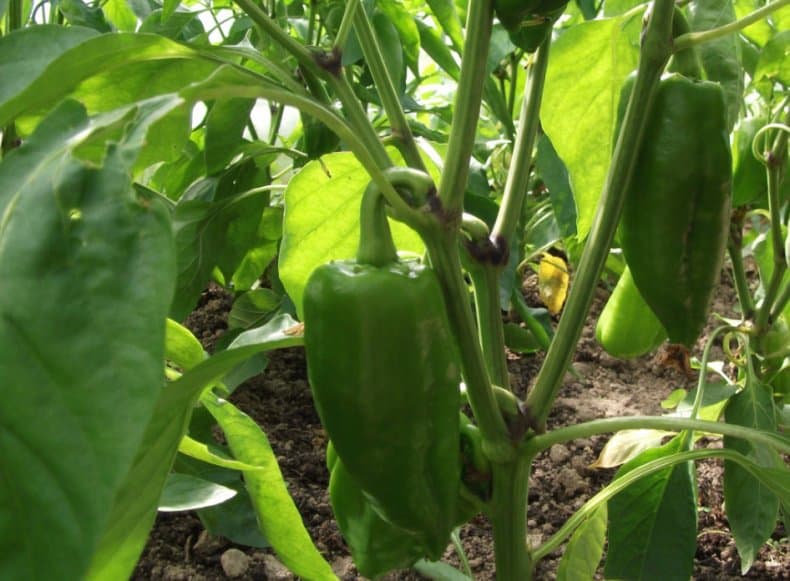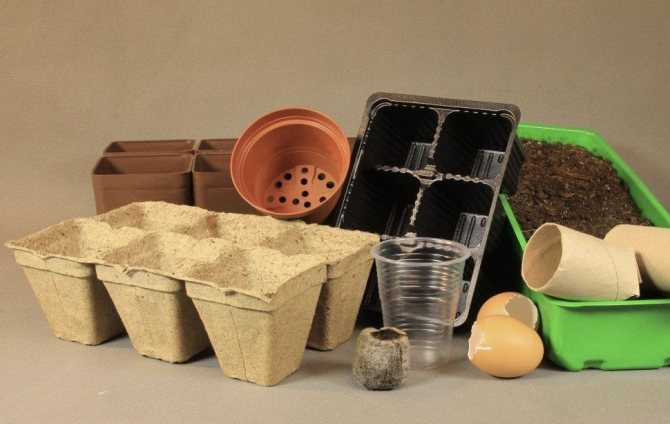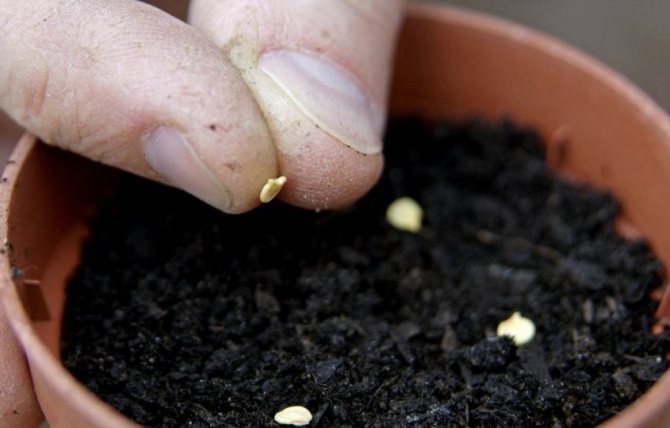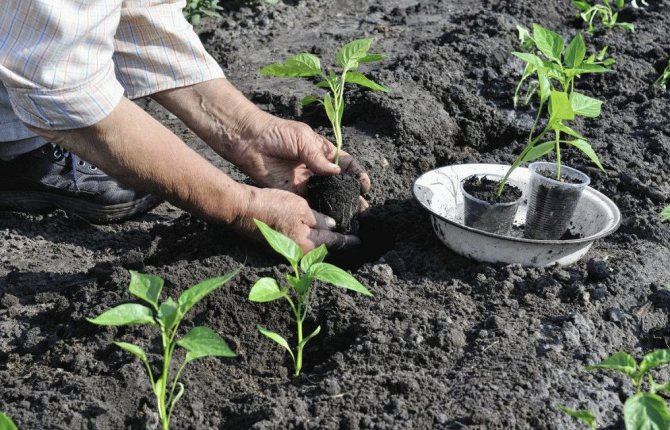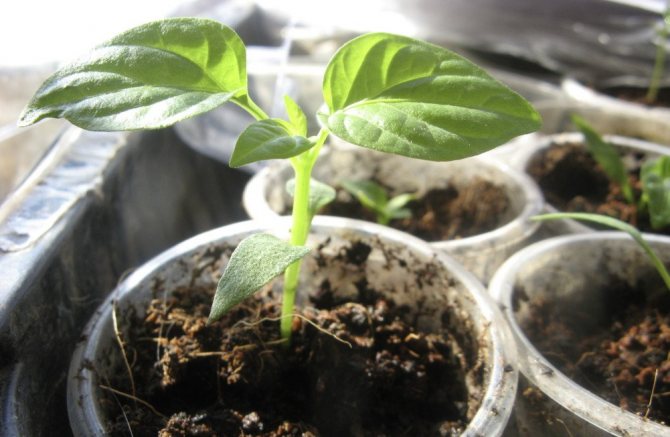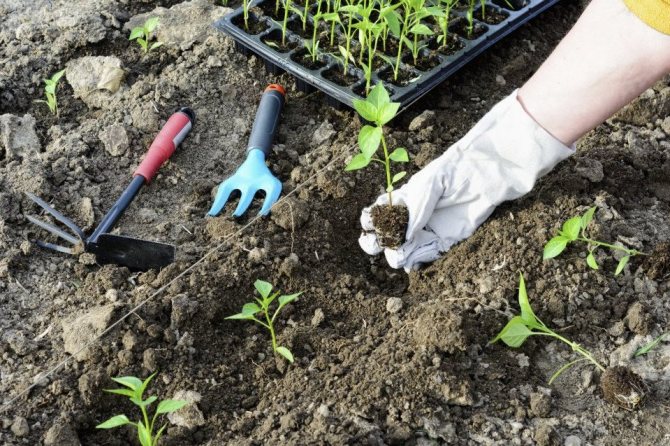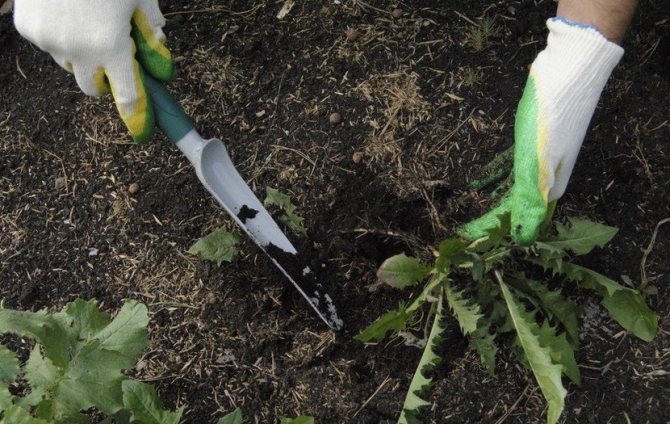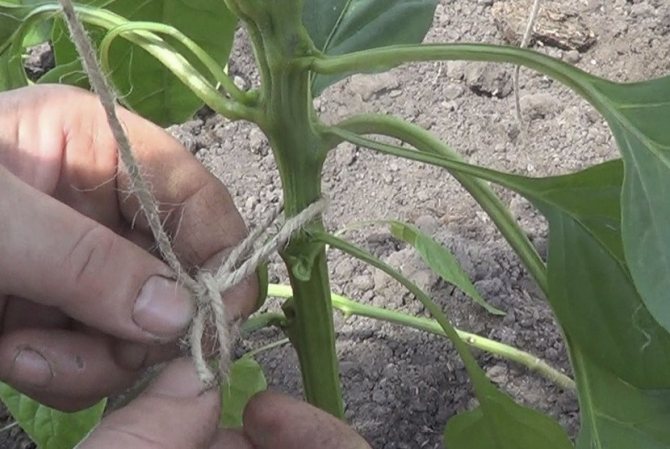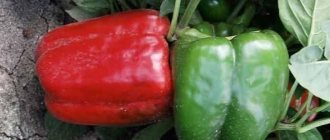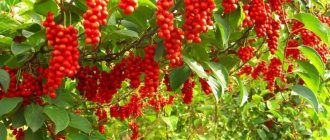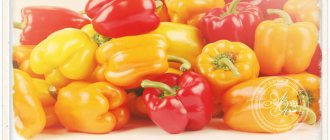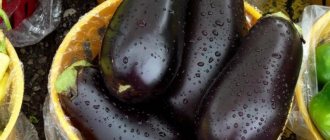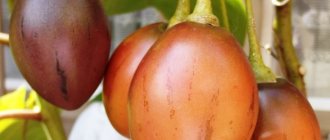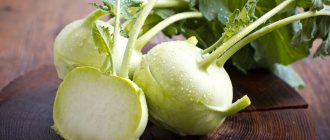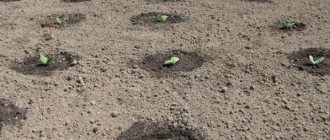Bell peppers belong to the nightshade family. At home, it is a perennial, in Russia it is grown as an annual crop. There are many varieties and hybrids of this vegetable of various colors and shapes. Choosing the best one for yourself is not an easy task. Sowing time for seedlings is not far off, so it's time to decide. We advise you to pay attention to the variety of sweet pepper Swallow. The mere fact that it is still planted by gardeners, although more than 50 years have passed since the variety was introduced into the State Register of Agricultural Achievements, says a lot.
Pepper Swallow, reviews of which gardeners are only positive, is not lost among many recently bred varieties and takes its rightful place. Let's take a closer look at this variety, and for this we will draw up a detailed description and description of the Swallow pepper and accompany it with a photo.
Description of the variety
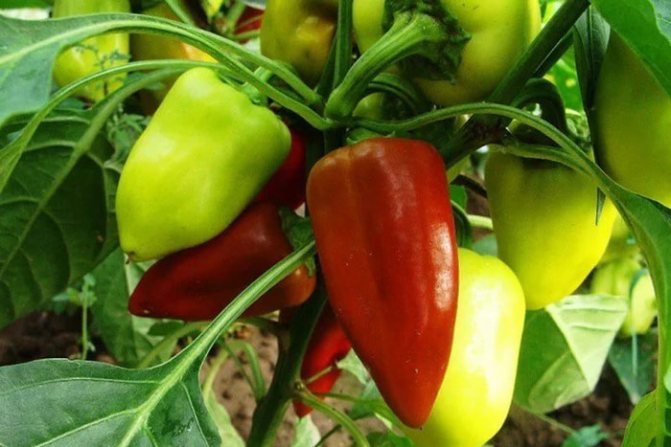
The Swallow's bush is standard, medium-sized, grows 50-60 cm high, often requires additional support and tying. The variety is characterized by amicable ripening. Fruits of classical shape are cone-shaped, slightly oval, weighing 70-100 grams. They grow in length up to 8-10 cm.
This is a fleshy pepper, its walls are 5-7 mm thick. The pulp is juicy, sweet. The skin is dense, because of this, it is well preserved, transported without damage. Ascorbic acid contains 96-117 mg.
Pepper Swallow has excellent characteristics:
- High seed germination.
- Good productivity regardless of weather conditions.
- Disease resistance.
- Unpretentious care.
- Amicable ripening.
- Good keeping quality and transportability.
Characteristics of the variety, advantages and disadvantages
The Swallow pepper variety was obtained at the Moldavian Research Institute of Irrigated Agriculture and Vegetable Growing by the method of individual selection based on the Moldova 118 variety. The variety got its name because the pepper fruit resembles a swallow's beak.
The first varieties of domestic selection appeared in the 50s of the XX century. In the early 70s, the Swallow, the Gift of Moldova, appeared. There were few varieties, but their quality satisfied the needs of both summer residents and collective farmers.
In the new century, the number of varieties grew by leaps and bounds. At the beginning of 2000, about 100 varieties were registered in the State Register, today there are more than 700 varieties. However, varieties from the distant 70s have become standards.


It is quite easy to list the characteristics of a variety that reflect numerous and undoubted advantages. In addition to the fact that they are described on the website of the State Register of the Russian Federation, the variety grows in almost every vegetable garden, as a reliable and proven supplier of excellent fruits.
The variety is approved for cultivation throughout the country, except for the Central Region.
An early ripening variety, matures to technical ripeness in 115-122 days, to biological ripeness in 135-145 days. Plant height 35-45 cm, semi-spreading bush, medium-sized, does not require a garter.
Belongs to the Hungarian variety type, the most familiar for our country, which is characterized by a conical shape of fruits and low growth. Fruits are conical, pendant, smooth, hard skin.
Fruit length is 8-10 cm. In technical ripeness it has a light green color, in biological ripeness it is red. The variety was bred for commercial production.
The mass of pepper ranges from 80 to 100 grams, has thick and juicy walls 5-7 mm wide, excellent and good sweetish taste without bitterness, pleasant aroma. The content of ascorbic acid is 96-117 mg%.
The main advantages of the Swallow:
- friendly ripening of fruits;
- increased keeping quality;
- transportability;
- resistance to diseases of culture;
- complete unpretentiousness in care;
- excellent productivity in all weather conditions;
- plasticity of culture, it easily adapts to changeable weather.
Important! The variety has universal use, it is used fresh, in cooking and canning, freezing.
Sweet peppers of the Swallow variety yield from 2.5 to 4.7 kg per 1 sq. m. under a film cover.
It is much more difficult to name the disadvantages of the variety, because there are almost none of them:
- the yield of Swallows is no longer unique, new varieties yield up to 10 kg / sq. m .;
- with a thickened planting, the volume of the crop is sharply reduced;
- long fruits grown on a short plant can lie on the ground and rot.
Pepper yield Swallow


In terms of ripening, Swallow is considered a mid-season variety. It takes about 120 days from germination to technical ripeness (light green color). If the seedlings appeared in early March, then the first fruits of technical maturity can be removed in early July. Until biological ripeness, when the pepper turns red, you will need to wait another 2-3 weeks.
From the Swallow variety, one can expect, although not the highest, but a fairly good stable yield of peppers of the same size, which are well stored for a long time.
The unpretentious Swallow gives 2.5-4.5 kg of fruit per 1m2. With a certain amount of care, up to 8 kg of peppers can be harvested from 1m2. The yield in the greenhouse is often higher than in the open field. But in the garden, these plants are less sick and better resist pests.
Pepper bears fruit until frost. Agrees amicably. It is necessary to collect fruits from the bush in a timely manner, then more ovary will appear. You can pick them in a state of technical ripeness, when they are still light green in color. With further storage in a dry room, the peppers will ripen and become deep red. The variety is distinguished by good keeping quality, the fruits are stored for a long time without spoiling.
At the end of August, it is better to remove all the flowers on the bush, then those peppers that are already on it will grow large, juicy and fleshy.
Pepper Swallow tastes sweet, with a characteristic aroma of bell pepper. It tastes great when raw, baked or stewed. The vegetable is suitable for freezing and preparation.
Planting
Sowing seeds for seedlings begins in February. Having selected the seeds for sowing, it is necessary to disinfect them by placing them in potassium permanganate diluted in water. In addition, the seeds can be soaked in herbal remedies. Their role is often played by the juice squeezed out of the agave. You can also use "Epins-Extra" or "Kemire". After disinfection, the seeds are sprinkled on gauze, previously soaked in water, and then put in a warm place.
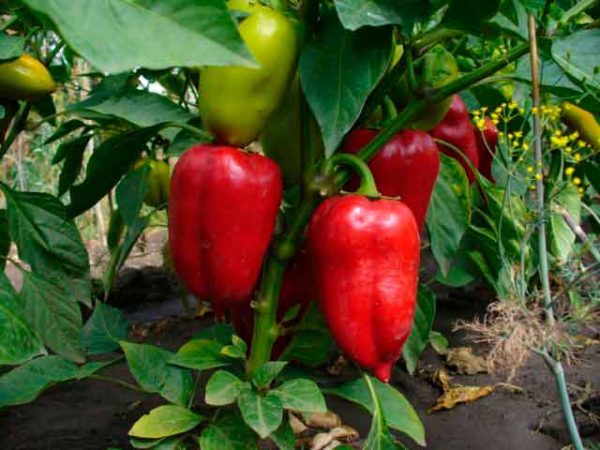

When sowing seeds in one container, they should be decomposed sequentially, retreating from each by 1.5-2 mm. The seeds are sprinkled with earth on top by 8-10 mm. Then you should thoroughly water the ground in a box or pot, and then cover it with plastic or glass. Prepared containers should be stored in a warm and bright place, keeping the air temperature from 23 to 25 degrees Celsius. After the first shoots appear, the glass or film is removed.
When 2-3 leaves have appeared, the seedlings should be dived, that is, make sure that each of the plants grows in its own container. Fertilizers are applied for the first time after the appearance of 4-5 leaves on the stem.
Before planting, the sprouts are hardened for 2 weeks. For this, the box is taken out to the balcony or veranda.
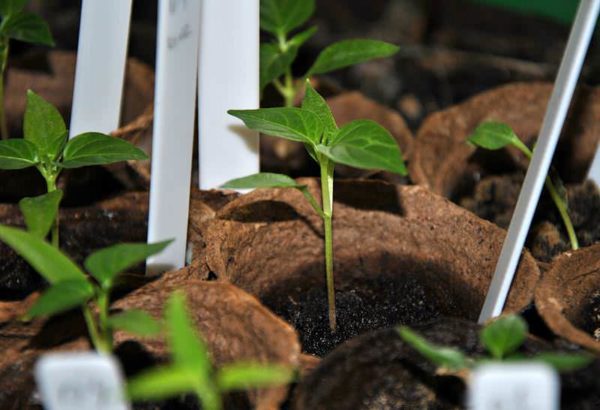

Suitable region and climate
Pepper is a thermophilic culture.Like many other varieties, the Swallow in the open field is grown in the regions south of Voronezh-Saratov. In areas to the north, you can get a good harvest only in greenhouses or using covering materials.
For growth and development, bell pepper needs an air temperature of 20-25 ° C during the day and 18-20 ° C at night. The soil should be warmed up to at least 19 ° C. Plants die at temperatures close to 0 ° C. Heat over 35 ° C also depresses them.
Daylight hours for pepper need at least 12 hours, so the plants quickly move to fruiting and the yield will be high and stable. For this, in February – March, additional lighting is used for seedlings.
Collection, storage and purpose of the crop
Collect the fruits, especially the first ones, in technical ripeness, that is, when they have already reached their size and are just beginning to be colored. With this technique, you will significantly increase the yield. The bush will direct all the juices to grow the remaining ovaries. Plucked fruits will ripen at home, on a sunny windowsill. By the way, unripe peppers Swallow can be kept fresh for 3-4 months at a temperature of + 9… +12 ° C, and ripe peppers - no more than 2 months at 0… +4 ° C. Peppers of this variety are edible and tasty at any stage of ripening.
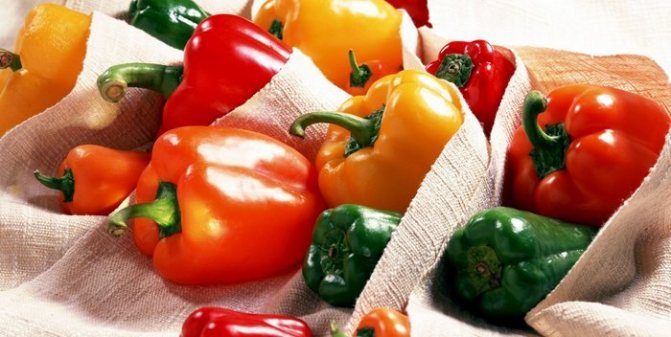

Bell peppers are stored by shifting each layer with paper or burlap
The purpose of each vegetable is to supplement our diet with healthy meals. Sweet peppers contain vitamins C, A, P and group B, as well as sugars, proteins, essential oil. Swallows fruits are universal: they are suitable for preparing salads, borscht, meat dishes, lecho, seasonings. For the winter they are pickled, salted, stuffed with vegetables, dried, frozen.
Testimonials
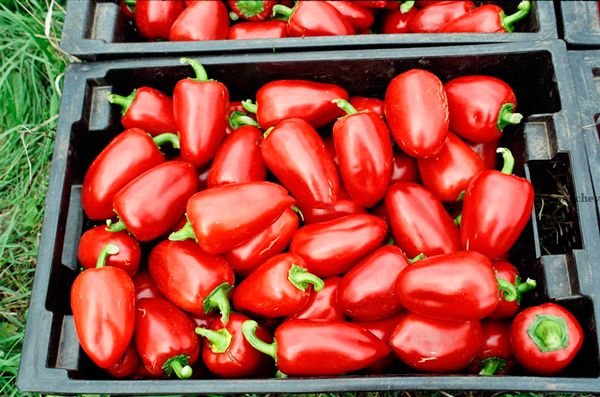

Reviews of gardeners about the Swallow pepper are mostly positive, it's not for nothing that the variety has been popular for several decades. They note the unpretentiousness of the culture and resistance to diseases and pests. Pepper tolerates adverse weather conditions well. This variety is appreciated for the fact that the collected unripe fruits gradually ripen in the room anyway, are stored for a long time, and are well transported. Even inexperienced gardeners can get a good harvest.
Disease and pest control
According to the characteristics, the variety is resistant to common diseases and parasites. Its immune system allows it to resist diseases such as verticillium wilting and late blight. Also, the plant is very rarely attacked by parasites in the form of aphids, spider mites or slugs.
Prevention of diseases and parasites consists in weeding the beds regularly, because most of the bacteria and pests are located on weeds. Disease can also be prevented by disinfecting seeds or soil for planting.
Growing seedlings of pepper Swallow
Photo:


You need to grow peppers through seedlings. If you sow seeds immediately in open ground, you will not be able to harvest a good harvest, the bushes will begin to bear fruit late. Early fruiting is important for a good harvest.
Pepper seeds for seedlings should be sown in late February – early March. First, the seeds should be soaked in a 1% solution of potassium permanganate for 20-30 minutes in order to disinfect them, disinfect. Floated instances are unusable, if there are any, it is better to throw them away.
To accelerate germination, seeds can be placed in a damp gauze or napkin for 4-5 days, constantly maintaining a moist environment. After a few days, the sprouts will hatch. They are planted to a depth of 2 cm in containers with earth or in peat tablets, which can later be placed in cups with soil.
The soil should consist of turf, sand and sawdust, be loose, air and moisture permeable. A special nutritious substrate for seedlings can be purchased in the store or you can take care of it in the fall and prepare it yourself.
Plants dive into separate cups in early April, when there are already two or three true leaves.For better survival, you can pour them with a solution of trace elements. The complexes "Kemir" or "Epina" will do.
Two weeks before the intended planting in the ground, the seedlings begin to harden: first, they ventilate the room where it is located, after a few days they take it out into the open air for several hours. A week later, the plants on the open balcony are left for the whole day, they are brought into the room at night. So it is gradually brought to a round-the-clock stay in the fresh air.
At the last watering before planting in open ground, it is advisable to feed the bushes with potash fertilizer.
They are planted in open ground in late May, early or even mid-June, depending on weather conditions. Here it is important to be guided by the weather, it is worth choosing a period when the night frosts have already gone forever. Seedlings by this time are already 90-100 days old, the bushes are blooming and even have an ovary.
Top dressing and watering pepper
Peppers are moisture-loving plants. Especially water is needed for fruit setting. At the same time, its overabundance can lead to decay of the basal stem and the entire root system of the plant. Sprinkle the pepper with extremely warm water. The best time for watering is morning and evening. During flowering, in order not to wash off the pollen from the flowers, the plants are watered at the root.
The first time the "Swallow" pepper is fed when two real leaves appear on the stem. For one liter of water, take 0.5 teaspoon of urea and 2.5 ml of sodium humate.
The seedlings are fed the second time after fourteen days or after the appearance of five true leaves. For a liter of water, take 0.5 teaspoon of urea and 1 teaspoon of potassium monophosphate. Fertilizers Ideal, Orton-Fe or Aquadon-micro can be used instead.
The third feeding of pepper is carried out two weeks before it is planted in the ground.
They feed it with infusion of cow dung, spreading it in a ratio of one to ten, or infusion of bird droppings, diluting it in a ratio of one to twenty. Both formulations are infused for a week before watering.
After these dressings, by the time of planting, the seedlings will have a well-developed root system and strong leaves of a rich green color.
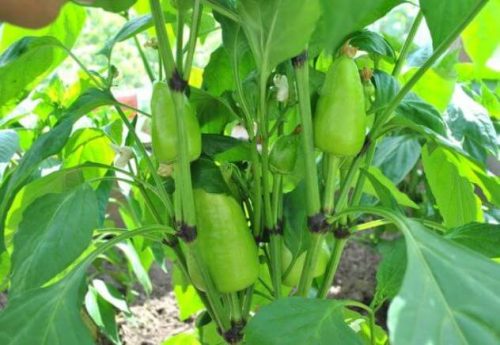

After planting the plants in the ground, they are fed for the first time in two weeks, when they have already taken root and begin to tie the first buds. To do this, use an infusion of mullein or bird droppings, or take
40g. superphosphate, 40g. ammonium nitrate, 20 g of potassium sulfate per 10 liters of water and watered with this composition.
The next dressing of pepper is carried out twice a month, alternating organic and mineral compositions.
After the fruits appear, the peppers are fed with superphosphate and potassium salt (two teaspoons of both for a ten-liter bucket of water).
Advice!
In the absence of manure, you can make an excellent organic fertilizer yourself. To do this, collect and finely chop the green parts of the weeds plucked from the garden. A bucket of this mixture is put into a hundred liter barrel and filled with water. The barrel is closed from above with a lid or foil. The resulting composition is infused for a week, diluted one to one with water and used for feeding.
Garden care


When choosing a place for a bed of pepper, you should avoid shaded areas. Bell pepper is a light-loving culture, it will turn yellow in the shade, it will develop poorly, and will not bear fruit.
It is important to observe the crop rotation: where eggplants, tomatoes or potatoes grew last season, it is better not to plant peppers. More suitable for him is the land where before that cucumbers, zucchini, carrots, pumpkins, onions were grown. Among gardeners, a technique is known - planting peppers in a garden bed with an early salad. Its leaves will protect seedlings from the burning sun. Before the pepper blooms, the salad has already been removed.
The usual planting pattern for sweet peppers is 40 × 60 cm. This distance is best suited for the formation of spreading bushes and the appearance of numerous ovaries.Thickened plantings lead to a decrease in yield.
The pegs, to which the bush will be tied, are best placed in the ground when planting seedlings, so as not to damage the roots of the plant later.
Further care for the pepper in the garden:
Watering
After transplanting seedlings to the garden, you need to water the bushes daily for several days. Once they have taken root, watering can be reduced to once every 3-5 days.
During the flowering period, more frequent soil moisture will be required again. Water for irrigation should be warm, + 25оС. Pepper does not tolerate drought well. If there is not enough moisture, the walls of the peppers will be thin, there will be no juiciness and meatiness.
The vegetable also suffers from waterlogging. Therefore, it is very important to determine the optimal watering.
It is best if it is drip. With this, the bushes grow faster than with sprinkling, the roots grow superficially, do not grow deep. The ground part is developing well. But drip humidification also needs to be regulated so that the roots of plants grow in depth, otherwise the bushes will fall in a strong wind.
For irrigation in furrows and for sprinkling, the row spacing should be about 70 cm.When drip irrigation, it is enough to leave a row spacing of 50 cm. The distance between the plants should also be 40-50 cm.
Weeding
It is important to carefully remove weeds in the garden. It is necessary to regularly loosen the ground under the bushes. In this case, it is not necessary to deeply cultivate the soil so as not to damage the roots. It is recommended to mulch the soil with black film, hay or plant residues to prevent weeds from germinating and to retain moisture in the soil.
Top dressing
For feeding peppers, the preparations "Ovyaz", "Epins-extra", "Growth", "Ideal", "Kemira" are suitable. They are used according to the instructions.
Bush formation
The first apical flower must be removed, otherwise the growth of the plant will be inhibited. It makes sense to leave about 25 ovaries on the bush, remove the rest of the flowers. The first fruits, ripe to technical ripeness, can be harvested, they will ripen completely in the storage area, and a new ovary forms on the bush. But the following fruits can be left on the bush until their biological ripeness. This technique allows you to increase the yield.
If the weather is rainy, it is better to remove the lower leaves and shoots. Bushes Swallows are undersized, lower fruits, if grown low above the soil, can rot from the ground. In drought, the lower leaves should not be torn off, they will keep the roots from overheating.
Important! Do not plant bell peppers close to bitters. After all, after cross-pollination, sweet can turn bitter. So that the varieties do not mix with each other, you need to maintain a distance of at least 3 m between the plants.
Transplanting
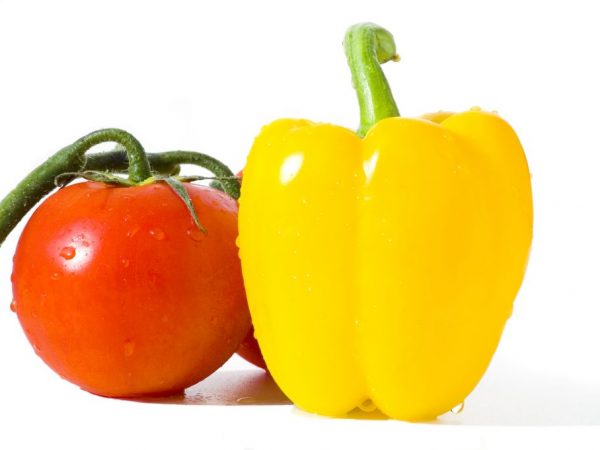

Peppers are planted with seedlings
Seedlings should be transplanted to a permanent place in early May. It is important to choose areas where legumes, cucumbers or cabbage were previously grown. It is not recommended to use places where nightshade crops were grown, because pepper has diseases similar to these crops.
The soil is chosen with a low alkali content. If the soil has a high acid content, lime is added to it. Planting sweet peppers is carried out according to certain rules. A distance of 50 cm is maintained between the holes, the distance between the rows is 70 cm.
Prepared seedlings are placed in the hole, in which the roots are slightly aligned so that the root system takes up the entire hole and develops better. It is necessary to bury the seedlings in such a way that the area above the roots protrudes slightly above the ground.
How to collect seeds?
Swallow pepper seeds can be harvested from your harvest. A large fruit is left on the seeds, which grows in the middle of the bush. They give him the opportunity to ripen to the phase of biological ripeness. When ripe, it will become a deep red.
Seeds are taken from the ripe fruit by cutting the pepper, dried for 4-6 days in the shade, in a draft. When they become dry and free flowing, put them in paper bags for storage.It is important to indicate the name of the variety and the year of seed collection on the bag. They are ready for planting for the next season and their maximum germination capacity (90-99%) lasts up to 5 years.
The swallow is exactly the variety that all gardeners need to grow. With it, you can be provided with pepper from mid-summer to late autumn. Even a few bushes in the garden will delight you with numerous fruits with fairly simple care.
Pepper care
Sweet pepper Swallow loves moist soil, but does not tolerate high humidity. Watering is carried out with warm, settled water.
The plant needs feeding every 2-3 weeks. During the flowering period, phosphorus-potassium fertilizers are applied to the ground.
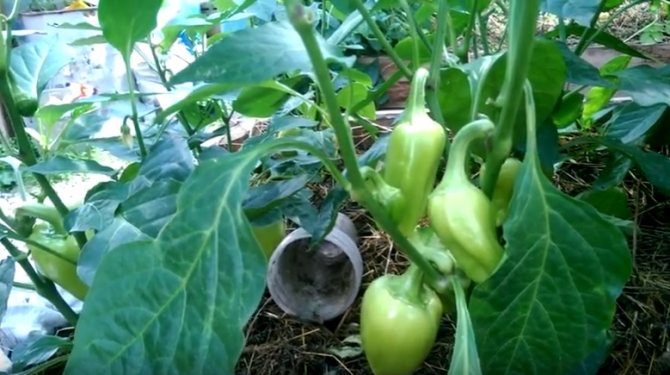

The variety requires periodic loosening of the soil and weeding. The hole around the bush should not be crusty. Loosening should be shallow, as the root system is very close to the surface and can be easily damaged.
The plant requires a garter and shrub formation. It is recommended to remove the first two ovaries that appear on the seedling. Also, all lateral shoots and leaves are trimmed up to the first fork. Pepper grazing is necessary to increase yields and increase large-fruit production.

